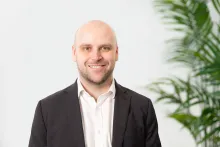Thomas Murray’s Financial Market Infrastructure (FMI) team was approached by a European central securities depository (CSD) for a risk assessment. As CSDs are a key component of the global marketplace, such an assessment requires specialist knowledge and a level of detail even beyond that which goes into scrutinising a bank.
Gary King and Weronika Kruk performed the evaluation and were kind enough to answer our questions about how the whole process works and what’s involved.



How often do you get the chance to evaluate a CSD from scratch?
Thomas Murray currently assesses and monitors around 148 ‘live’ CSDs worldwide, covering all the investable markets in which our clients hold assets. We get maybe two or three client requests a year for new CSD assessments, which are either CSDs in newly invested markets (such as North Macedonia in this case) or new CSDs in existing markets (e.g. ECSD in Egypt).
Are some CSDs easier to evaluate than others, and if so, why?
Some investors assume that all markets work similarly from a post-trade perspective and therefore most CSDs do, but that's not the case in reality. There is a broad spectrum of settlement, safekeeping and asset servicing models, so a wide variety of different CSD practices. The degree of difficulty and effort to assess each CSD therefore varies, and the level of cooperation and transparency from the CSD is also a major factor. In the case of North Macedonia, the CSD was very forthcoming with any information we asked for.
But we still had to do the usual rigorous check of information provided to make sure we weren’t getting only the most favourable picture.
How do you check that?
We use a combination of things – there’s a lot of detective work involved, and it’s a very forensic approach. Publicly available information that the CSD has disclosed, or stories in the trade press – can be quite helpful, but it all needs corroboration. For that we’ll go to support banks, the local custodians that we have relationships with, and to official bodies like regulators and central banks. They can offer an unvarnished view of how the CSD is performing and what its operations and capabilities are really like.
The support banks also keep us in touch with changes in market and CSD practices as they happen. This daily monitoring helps us maintain a running view of each CSD and acts as a validation on CSD announcements.
Additionally, we have a programme of market visits, around 50 markets in a typical year, where we are on the ground with the CSD, regulators, exchanges, central banks and the local custodians. This gives us the opportunity to test representations, view documentation and really understand the market operational nuances, as well as strengthen our local relationships.
It sounds like these new evaluations have long timelines.
The speed at which we can complete a new assessment does vary depending on the level of cooperation and pace of communication with support banks and the CSD, but our standard timeframe is around three months from start to finish.
On that note, what risks do you look for?
The principle behind our methodology is to assess the risks posed by the CSD to the participants and their clients. There are eight key risks that we evaluate, which are orientated around the core functions of the CSD; settlement, safekeeping and asset servicing. Additionally, we assess operational, financial oversight and transparency risk, and new this year, ESG. Underlying these eight risks are over 50 key criteria that are evaluated separately to create each particular risk grade.
Can you give examples of the key criteria of the eight risk factors and the weights you assign to them?
Our detailed scoring methodology is proprietary to Thomas Murray but our public methodology is available on request; this explains the key criteria for each risk and the risk weightings.
For example, asset safety risk focuses on position segregation and account naming conventions, but also includes aspects of the market legal framework such as nominee accounting and extent of securities liens, forms of deposited securities (for example, dematerialised, physical, bearer, and registered), reconciliation practices, and accounting controls.
Each of these have elements which are scored, weighted and aggregated into a score for each key criteria, which are in turn aggregated to an asset safety score. So, it is very much a detailed 'bottom-up' approach.
It sounds very much like a standard approach, but how does that tally with every market and CSD being different? How does Thomas Murray's methodology accommodate those differences?
Our methodology is driven by global best practices and, certainly, in many areas of CSD operations there are accepted global best practices. Ultimately, however, we are assessing the exposure that remains to the CSD participants after the application of the CSD's role as risk mitigator in post-trade operations in that particular market.
The benefit of this approach is that we can allow for tailored processes that might be a best-fit for that market's specificities.
Market size and sophistication are relevant factors, for sure, as are cultural norms and legal restrictions. As an example, if short-selling is prohibited in a market and there is no possibility of even technical short positions due to pre-funding practices, securities lending may not be an appropriate risk control mechanism. As mentioned, there's no set way for a CSD to operate, so what will be a perfectly acceptable approach to managing a particular risk in one CSD's market could be totally inappropriate for a CSD in another market.
After you've completed your assessment with the CSD and support banks, what are the next steps before it's made live to clients?
This is where the role of the Risk Committee is crucial in terms of the governance role around the analysis. As the Risk Committee comprises a cross-section of key risk experts in the firm, it can be quite tough.
There’s a lot of accumulated knowledge on the Committee, and it is common to have the grades and assessments challenged, or for additional information to be requested. When that happens, we go back to the CSD for clarification, before we re-present to the Risk Committee for sign-off.
Final question – does the CSD have sight of, and ability to comment on, their own assessment?
Absolutely, we fully involve the CSD in the process. For a new assessment, like North Macedonia, the CSD is continuously consulted throughout the analysis, and is given 'right of reply' on the final assessment. Obviously, we don't let them amend the final grades, but they can fact-check and ensure we have a full and proper understanding of the processes we are assessing.
This is the same for our established assessments; each CSD is invited to fully review the information in their reports every year. Along with the support bank annual review, this ensures we keep a balanced opinion of these systemically important financial infrastructures.
Many thanks, Gary and Weronika.

Orbit Intelligence
Centralise your monitoring and reporting, access Thomas Murray risk assessments and third-party data feeds.
Insights

NYSE proposes around-the-clock trading
The New York Stock Exchange exploring the possibility of trading on a 24/7 basis has caused both excitement and concern among market participants.

Cash correspondent banking and monitoring: A primer
Correspondent banking, whether traditional or digital, plays a vital role in the international financial system.

Correspondent monitoring: A safeguard against the worst-case scenario
Correspondent banking plays a vital role in the global financial system, though it does carry significant risks.

Liquidity in Ghana and Zambia
The state of foreign exchange liquidity across Africa often shares several key features and challenges that impact the region’s financial markets.


